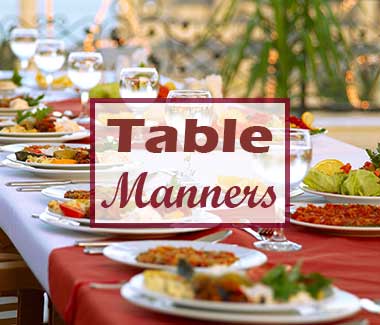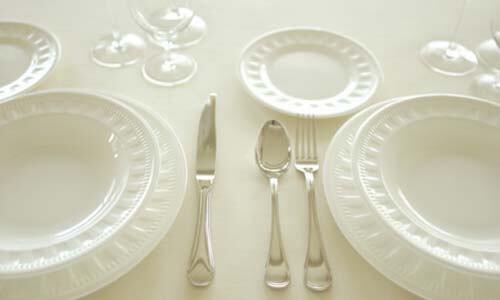Cuba Dining Etiquette
Dining etiquette for making a toast. The most common toast is salud (to your health).
Dining etiquette for beginning to eat. Start eating only after the host says "Buen provecho!"
Dining etiquette for handling your utensils. Cubans do not switch knives and forks. The knife remains in your right hand, and the fork remains in your left.
Dining etiquette for signaling to the waiter. The knife and fork are laid parallel to each other across the right side of the plate when you are finished eating. If you put both utensils down on the plate for any real length of time, it is a sign to the waitstaff that you are finished, and your plate may be taken away from you. Alternately, if you lay your cutlery down on either side of the plate it means you haven't finished; but if you really are, the host might interpret this as a sign that you were not happy with the meal.
Dining etiquette for using your hands. When not holding utensils, your hands should be visible above the table. Rest your wrists on top of the table.
Dining etiquette for passing food. At the table, pass all dishes to your left.
Dining etiquette for eating fruits and vegetables. Always use a knife and fork to cut them.
Dining etiquette for seating. The most honored position is at the head of the table, with the most important guest seated immediately to the right of the host. If there is a hosting couple, one will be at each end of the table. Men typically rise when women enter the room, and continue to hold doors for women and allow them to enter a room first.
Dining etiquette for eating in restaurants. In informal restaurants, you will rarely be required to share a table. Waitstaff may be summoned by making eye contact; waving or calling their names is very impolite.
Dining etiquette for talking business. Whenever the business meal occurs, it is generally not the time to make business decisions. Take your cue from your Cuban associates: if they bring up business, then it's okay to discuss it.
Dining etiquette for eating in a Cuban home. When you arrive at a Cuban asso¬ciate's home for a formal meal, you will be told where to sit. Once you are invited to another room, allow more senior members of your party to enter the room ahead of you: men should move aside to allow women to enter the room ahead of them.
Dining etiquette for paying the bill. Usually the one who does the inviting pays the bill, although the guest is expected to make an effort to pay, especially in Cuba, where it is recognized that for visitors the expense is minimal. Sometimes other circumstances determine who pays (such as rank).
Dining etiquette for tipping. The tip is typically not included in the bill, but it is also not expected (nor is it illegal, as is the case in certain planned economies); it is usually the equivalent of an extra U.S. dollar. Hand your tip to the waiter; do not leave it on the table.

related:
caribbean dining etiquette
north american dining etiquette



